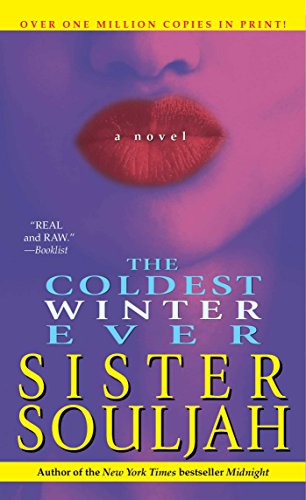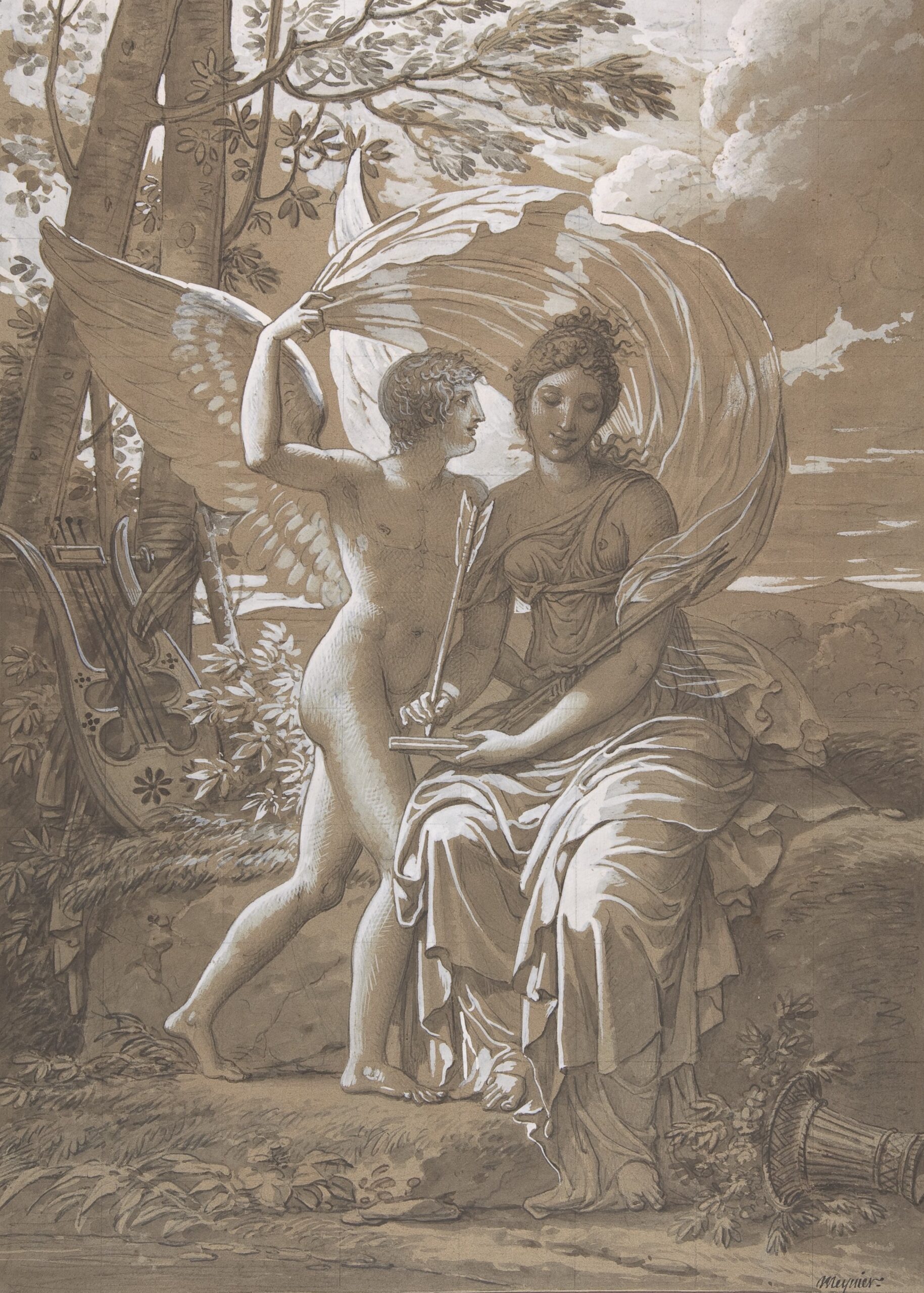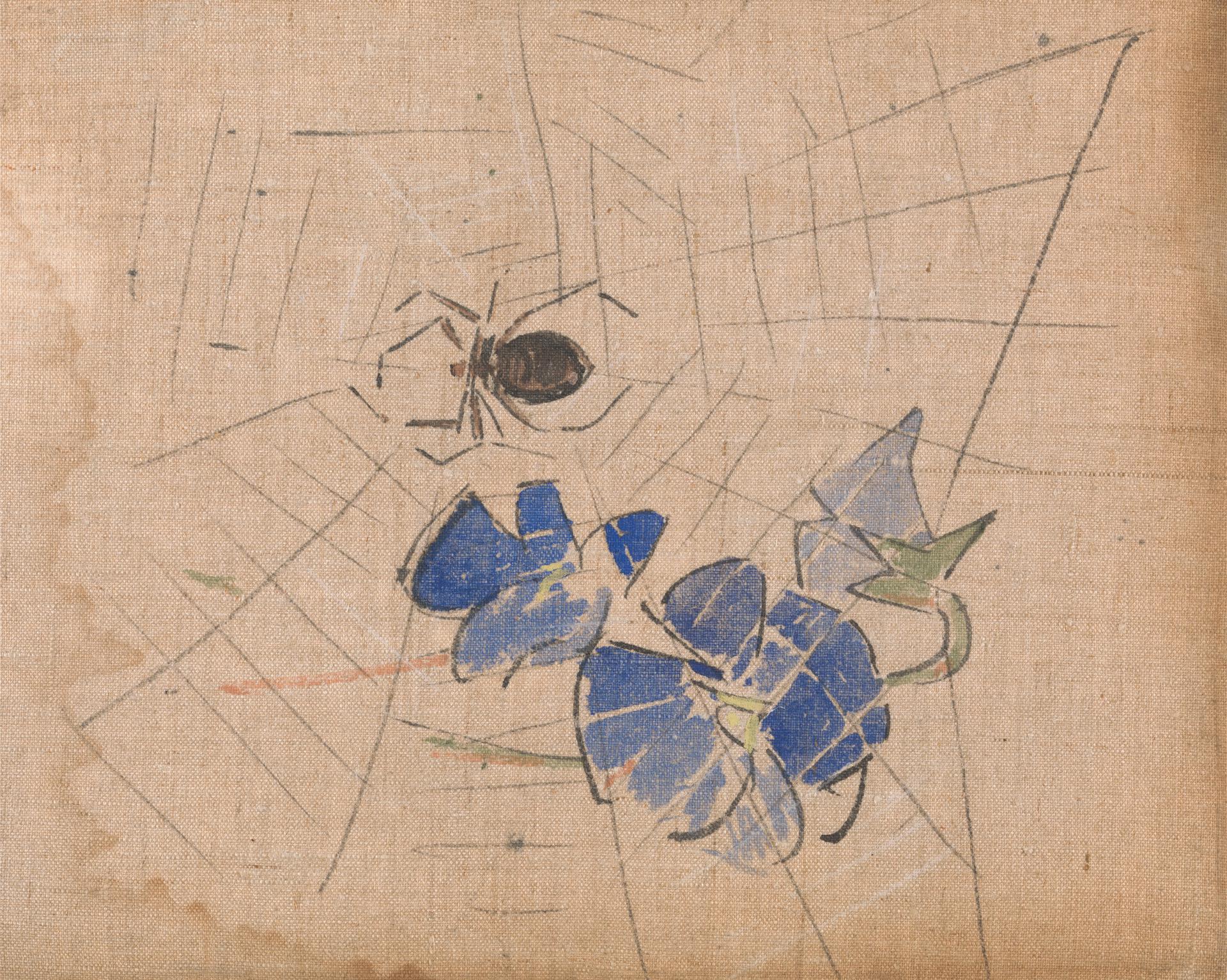Years ago, a professor warned me about having too many clothing descriptions in one of my stories. He thought that the mention of brand names and particular cuts of skirts might end up only attracting a younger audience. He asked me who I was writing for. I didn’t really have an answer. I remember feeling a little misunderstood because I was an adult who liked to see clothing represented in books. I thought a lot about that conversation recently while rereading Sister Souljah’s novel The Coldest Winter Ever. In the book, Winter Santiaga, a spoiled and savvy teenager, reluctantly moves with her family out of Brooklyn. Her father is arrested soon after—Winter’s two sisters are put in foster care, Winter’s mother gets hooked on drugs, and Winter hustles to stay alive. She uses her knowledge of Chanel and Gucci to understand people. Early on, her attire unites her with her family at a symbol of high status. Her outfit choices later evolve into a performative act of class when she faces money troubles.
 As I noticed the power of labels in that story, I started thinking more seriously about the work that fashion and labels do in literature. The relevance of Souljah’s book—considered part of the genre of “urban fiction” or “street literature”—among audiences of different ages and cultures suggests that having a designer-obsessed lead character does not actually limit the scope of the genre. Are issues of gender and race the reasons that fashion is often viewed as an inherently immature topic in the literary sphere? Designer shoes and clothes may inspire younger protagonists, but divorcing fashion from femininity would take away something that women have mastered, in spite of its oppressive underpinnings. I don’t mean to say that dressing up to meet the standards imposed on women is revolutionary, but it plays a major role in navigating a patriarchal world.
As I noticed the power of labels in that story, I started thinking more seriously about the work that fashion and labels do in literature. The relevance of Souljah’s book—considered part of the genre of “urban fiction” or “street literature”—among audiences of different ages and cultures suggests that having a designer-obsessed lead character does not actually limit the scope of the genre. Are issues of gender and race the reasons that fashion is often viewed as an inherently immature topic in the literary sphere? Designer shoes and clothes may inspire younger protagonists, but divorcing fashion from femininity would take away something that women have mastered, in spite of its oppressive underpinnings. I don’t mean to say that dressing up to meet the standards imposed on women is revolutionary, but it plays a major role in navigating a patriarchal world.
Katja Horvat writes about the connection between writers’ fashion lives and their use of fashion in their writing in “Fashion & Literature.” By looking at people like Virginia Woolf, Horvat finds ways that writers intersect with designers, especially in terms of skill and interest in character building. She explains that “both fashion and literature occupy a fetish for fantasy inside the minds of so many people.” The element of fantasy is an important aspect, too, for many characters’ understandings of their fictional world (read more about memorable clothes in books at The Millions here). Looking a certain way directly affects how they get treated by other characters and, therefore, the story.
 For Winter, understanding fashion is a way to learn about other people, but it’s also an important aspect of her identity. She uses designer clothing to remain socially relevant after losing her bankroll to the prison industrial complex. When she’s in a group home with only $350 and a party to attend, she goes shopping. The day of, “I laid my three hundred dollars on the counter at Saks Fifth Avenue. I walked out with a designer shopping bag with one Calvin Klein slip dress inside…I kept telling myself, This is an investment. This is an investment.” She knows that access to rich men requires her to look expensive. The mantra in her head shows that she is not being bad with money by buying clothing; she’s strategic in her spending. In Ashley & JaQuavis’s The Cartel, another work in the street literature genre, access to designer clothes takes on a different role. The main characters can all afford the fanciest stuff, and many specifics are written into the narrative, reinforcing a fantasy element of vicarious wealth that also drives the use of fashion in literature.
For Winter, understanding fashion is a way to learn about other people, but it’s also an important aspect of her identity. She uses designer clothing to remain socially relevant after losing her bankroll to the prison industrial complex. When she’s in a group home with only $350 and a party to attend, she goes shopping. The day of, “I laid my three hundred dollars on the counter at Saks Fifth Avenue. I walked out with a designer shopping bag with one Calvin Klein slip dress inside…I kept telling myself, This is an investment. This is an investment.” She knows that access to rich men requires her to look expensive. The mantra in her head shows that she is not being bad with money by buying clothing; she’s strategic in her spending. In Ashley & JaQuavis’s The Cartel, another work in the street literature genre, access to designer clothes takes on a different role. The main characters can all afford the fanciest stuff, and many specifics are written into the narrative, reinforcing a fantasy element of vicarious wealth that also drives the use of fashion in literature.
 Like Winter, Sophie Kinsella’s protagonist, Becky, in her humorous novel Confessions of a Shopaholic also loves fashion, as suggested in the title, but can’t afford any of it. There is much less at stake for Becky than for Winter, but Becky also sees the world through designer names, including herself. She explains, “I’m wearing my black skirt from French Connection, and a plain white T-shirt from Knockerbox, and a little angora cardigan which I got from M&S but looks like it might be Agnés B. And my new square-toes shoes from Hobbs.” She explains, “it’s a habit of mine, itemizing all the clothes I’m wearing, as though for a fashion page,” that she learns from fashion magazines at a young age. Becky thinks of herself as the model in this scenario. Even as she struggles (and hides) from one bill to the next, she thrives off of the possibility that she will be remembered for certain outfits. With every new piece that she desires, she imagines that people will call her “the girl with the [fill in the blank].” This character is jaded, but there’s something purposeful in her extravagant purchases. As with Souljah’s novel, the act of cataloging clothing by brands creates a sense of intimacy among women characters and readers.
Like Winter, Sophie Kinsella’s protagonist, Becky, in her humorous novel Confessions of a Shopaholic also loves fashion, as suggested in the title, but can’t afford any of it. There is much less at stake for Becky than for Winter, but Becky also sees the world through designer names, including herself. She explains, “I’m wearing my black skirt from French Connection, and a plain white T-shirt from Knockerbox, and a little angora cardigan which I got from M&S but looks like it might be Agnés B. And my new square-toes shoes from Hobbs.” She explains, “it’s a habit of mine, itemizing all the clothes I’m wearing, as though for a fashion page,” that she learns from fashion magazines at a young age. Becky thinks of herself as the model in this scenario. Even as she struggles (and hides) from one bill to the next, she thrives off of the possibility that she will be remembered for certain outfits. With every new piece that she desires, she imagines that people will call her “the girl with the [fill in the blank].” This character is jaded, but there’s something purposeful in her extravagant purchases. As with Souljah’s novel, the act of cataloging clothing by brands creates a sense of intimacy among women characters and readers.
 In Shay Youngblood’s Black Girl in Paris, a work of literary fiction, the narrator analyses clothing to understand nationhood. Before getting an au pair position, she writes:
In Shay Youngblood’s Black Girl in Paris, a work of literary fiction, the narrator analyses clothing to understand nationhood. Before getting an au pair position, she writes:
I sat still for a moment before picking up a pen and pad and calculating what I could do with either thousand francs. First thing, I would buy myself a pair of shoes from one of the hops near place de l’Odeon. High-gloss Italian leather pumps, sleep Japanese creations that looked like miniature cars, stiff English riding boots. I would be practical but not too, something very simple, very French. Then I would not be afraid to enter Les Deux Magots, where Wright sometimes met Baldwin for drinks and conversation. The right shoes would give me a certain confidence.
It’s not just that she needs a new pair of shoes. She justifies the purchase as a tool to explore the city like other black American writers have. She is well versed in brand names and styles; knowing what “very French” shoes look like allows her to spend her money in a meaningful way. The rest of her trip to Paris continues to rely upon her understanding of clothes. It’s how she learns about access, definitely, but it’s also how she learns about her role in the world:
I am wearing a long-sleeved, knee-length blue sundress, which is covered by my heavy coat from the flea market. I do not feel particularly American, but any Frenchman can tell because I am wearing white socks and black leather running shoes and carrying a black canvas backpack slung over my right shoulder like an ordinary tourist.
 Ifemelu, of Chimamanda Adichie’s novel Americanah, similarly considers her transnational experiences through the lens of clothing. Ifemelu, the ever-practical observer, pays close attention to race, hair, and clothes throughout the novel. As she gives away her clothing when she finally gets her visa, “the first thing they [her friends] all reached for was her orange dress, her favorite dress, a gift from Aunty Uju; the A-line flair and neck-to-hem zipper had always made her feel both glamorous and dangerous.” When she goes shopping in America and sees a new friend pick out a “shapeless” dress, she worries “whether she, too, would come to share Ginika’s taste for shapeless dresses, whether this was what America did to you.”
Ifemelu, of Chimamanda Adichie’s novel Americanah, similarly considers her transnational experiences through the lens of clothing. Ifemelu, the ever-practical observer, pays close attention to race, hair, and clothes throughout the novel. As she gives away her clothing when she finally gets her visa, “the first thing they [her friends] all reached for was her orange dress, her favorite dress, a gift from Aunty Uju; the A-line flair and neck-to-hem zipper had always made her feel both glamorous and dangerous.” When she goes shopping in America and sees a new friend pick out a “shapeless” dress, she worries “whether she, too, would come to share Ginika’s taste for shapeless dresses, whether this was what America did to you.”
Her exploration of the concept of America continues to be based on fashion as she gets involved in blogging. One of her blog posts explains:
I bought a dress from a vintage shop on eBay the other day, made in 1960, in perfect shape, and I wear it a lot. When the original owner wore it, black Americans could not vote because they were black. (And maybe the original owner was one of those women, in the famous sepia photographs, standing by in hordes outside schools shouting ‘Ape!’ at young black children).”
Wearing American clothing, especially second-hand, becomes an intellectual experience for Ifemelu. This dress has historical value because it symbolizes white aggression. Her understanding of American politics becomes more literal when the narrator says, “still, there was, in Michelle Obama’s overly arched eyebrows and in her belt worn higher on her waist than tradition would care for…it was this that drew Ifemelu, the absence of apology, the promise of honesty.”
What gets lost in the assumption that fashion labels and concepts are immature is the female gaze. I don’t think my professor’s comments necessarily came out of malice, but constant self-surveillance is gendered and racialized, so the politics of this topic require serious inspection. Watching the mannerisms and physical appearance of oneself and others interchangeably is a complex part of being a woman, and made more complex for women of color. What seems superficial to some is survival for others.
Image Credit: Unsplash/Michael Lee.














